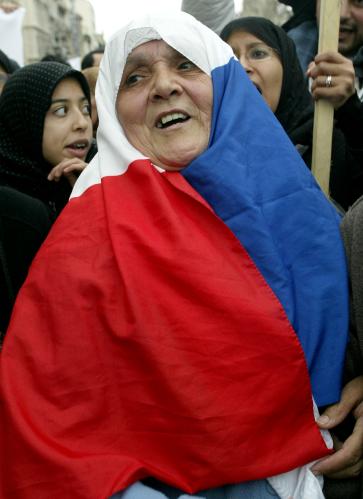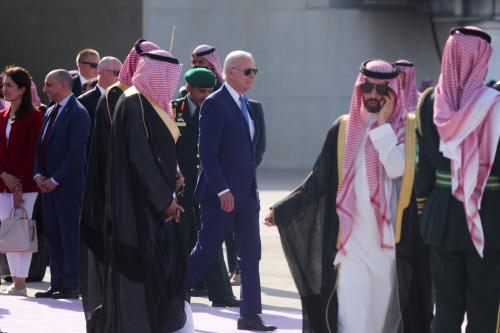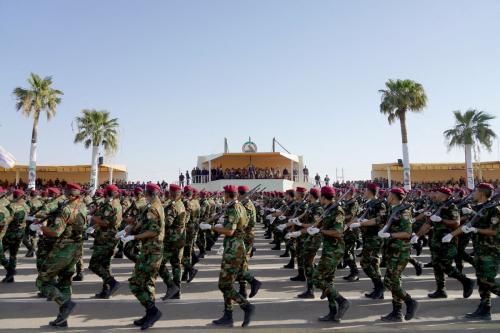Content from the Brookings Institution India Center is now archived. After seven years of an impactful partnership, as of September 11, 2020, Brookings India is now the Centre for Social and Economic Progress, an independent public policy institution based in India.
Editor’s Note : In this piece from South Asia Hand, Teresita Schaffer and her husband, Howard Schaffer, reflect on how India and Pakistan sometimes find it difficult to shift gears to solve problems, even when they would greatly benefit from doing so. The authors develop this theme more fully in their forthcoming book, “India at the Global High Table: The Quest for Regional Primacy and Strategic Autonomy.” The book will be published by Brookings Institution Press this spring.
A deadly avalanche that killed ten Indian soldiers earlier this month on the disputed 20,000 foot high Siachen glacier in Kashmir received extensive coverage in the Indian and Pakistani media. The avalanche prompted some commentators in both countries to call for an early settlement of what seemed to them and to many others (including ourselves) a senseless dispute.
Their voices were largely drowned out in India by an outpouring of patriotic fervor that cast the dead soldiers as “Bravehearts” who had died for their country. The Indian Defense Minister publicly dismissed pleas that both sides pull back from the 47-mile long glacier where they have confronted one another since 1984. Possibilities for a settlement seem remote.
Siachen is one of several disputes between India and Pakistan that range in importance from the future status of Kashmir to the precise location of a small stretch of their international boundary near the Indian Ocean. The Siachen dispute arose because the Line of Control drawn between the contending armies in Kashmir terminates in the high Himalayas. India and Pakistan have different versions of where it should go from there as it makes its way toward the Chinese border. This made the glacier a no-man’s land.
Anticipating a Pakistani move in 1984 to seize Siachen, the Indian army struck first. Since then it has controlled most of the glacier, including the main range. Pakistan also deploys troops in the area. Published figures say that the two countries together maintain about 150 outposts. Published figures would put the numbers of troops somewhere around 1000-2000 for each side. These are small numbers for both armies, but there is a long and complicated logistical and support chain that goes with them. India’s formal reports to parliament put the numbers of soldiers killed from 1984 to date at just under 900; Pakistani losses are variously estimated at 1000-3000.
Some fighting took place in the earlier years, but a ceasefire was worked out in 2003 and remains in place. The real enemy is nature, in this high altitude freezing desert. There have been no deaths by enemy fire in recent years. At the post most recently struck by an avalanche, the oxygen is so thin that it cannot support fire for cooking. Over time, both sides learned to deal more effectively with the bitter cold and piercing winds. The mudslides and avalanches that have kept up a steady stream of death have been triggered both by climate change and by human activity that unsettled the packed snow on the glacier itself. The recent disaster was by no means the most deadly: in April 2012, 140 Pakistani soldiers were buried by another avalanche.
Sporadic efforts to resolve the dispute have included the idea of converting Siachen into an “international peace park.” Less idealistic approaches have focused on the demilitarization of the glacier, but only after both sides had reached an agreement delineating the areas they had occupied before withdrawing and pledging not to try to take them back. These efforts won some support within the government headed by Indian National Congress party leader Manmohan Singh in the 2000s. But they were stoutly opposed by the Indian Army, one of the few security issues on which the normally apolitical uniformed military has taken a public stand.
This was particularly evident in 2006, when India and Pakistan seemed to be coming close to an agreement on the issue. In a telegram later released by Wikileaks, the U.S. Embassy in New Delhi reported in May of that year that “Army Chief J.J. Singh appears on the front page of the Indian Express seemingly fortnightly to tell readers the Army cannot support a withdrawal from Siachen.” The embassy went on to note that “given India’s high degree of civilian control over the armed forces, it is improbable that Gen. Singh could repeatedly make such statements without Ministry of Defense civilians giving it at least tacit approval.” It concluded that “[w]hether or not this is the case, a Siachen deal is improbable while his – and the Army’s – opposition continues to circulate publicly.” After the most recent tragedy, LtGen D. S. Hooda, who heads the Northern Command of the Indian army, has maintained this position. He was quoted in a Kashmiri paper as saying that despite these tragic casualties, India must remain in its present positions. He specifically ruled out the mutual demilitarization suggested by Pakistan.
The Indian public has had ample opportunity to read about the terrible human cost of Siachen, but civilian public opinion is unlikely to force the issue. For Indians, the avalanche tragedy was heightened by the apparently miraculous survival of one of the soldiers, who was reportedly buried under twenty-five feet of snow for six days before being rescued. Medically evacuated to New Delhi, he was visited in the hospital by Prime Minister Narendra Modi and became an instant, highly publicized hero. His death a couple of days later made him a national martyr.
Siachen has been one of the issues discussed between India and Pakistan in the on-again, off-again dialogue they initiated in the late ‘90s. Plans to recommence these wide-ranging discussions in January were postponed following the attack on an Indian air base by Kashmiri dissidents whom the Indians were convinced had been directed from within Pakistan.
Progress on Siachen is unlikely when and if these talks actually begin. Although the Modi government was willing to exchange with Bangladesh a small number of enclaves along their border, abandoning territory in Kashmir would strike a much different nerve both in the ruling BJP, the army, and the country at large. (It would be easier for the Pakistanis to accept since their military, which calls the shots on these issues, could argue that Pakistan had got the better deal by forcing the Indians off the main glacier range.)
So the issue is likely to continue to perplex outsiders like ourselves. Retired Indian Army friends have told us how important Siachen is for Indian security. But we find it difficult to accept the assertion that Siachen is a potential invasion route. The difficulty both Pakistan and India have had sustaining small forces in that terrain would be magnified many-fold if one attempted a major military operation. By the same token, we wonder how important Siachen would be in India’s strategy against China. It has long struck us as a great waste of men and material which, were the two sides to act rationally, could be satisfactory resolved. Worse, the deaths suffered by both sides are only likely to increase as climate change increases the risk of avalanches and mudslides.
But Indians and Pakistanis are not the only people in the world who don’t always act rationally on emotionally-charged issues.



Commentary
Op-edSiachen back in the news—but don’t look for peace yet
February 18, 2016